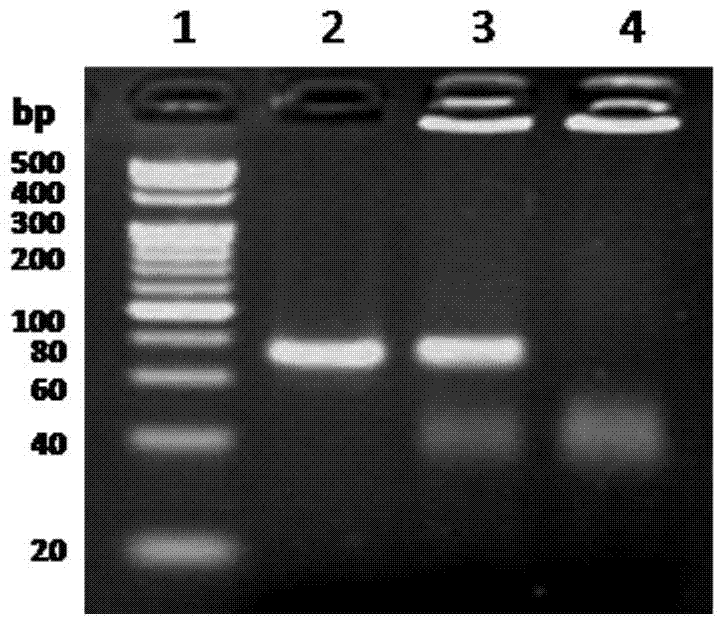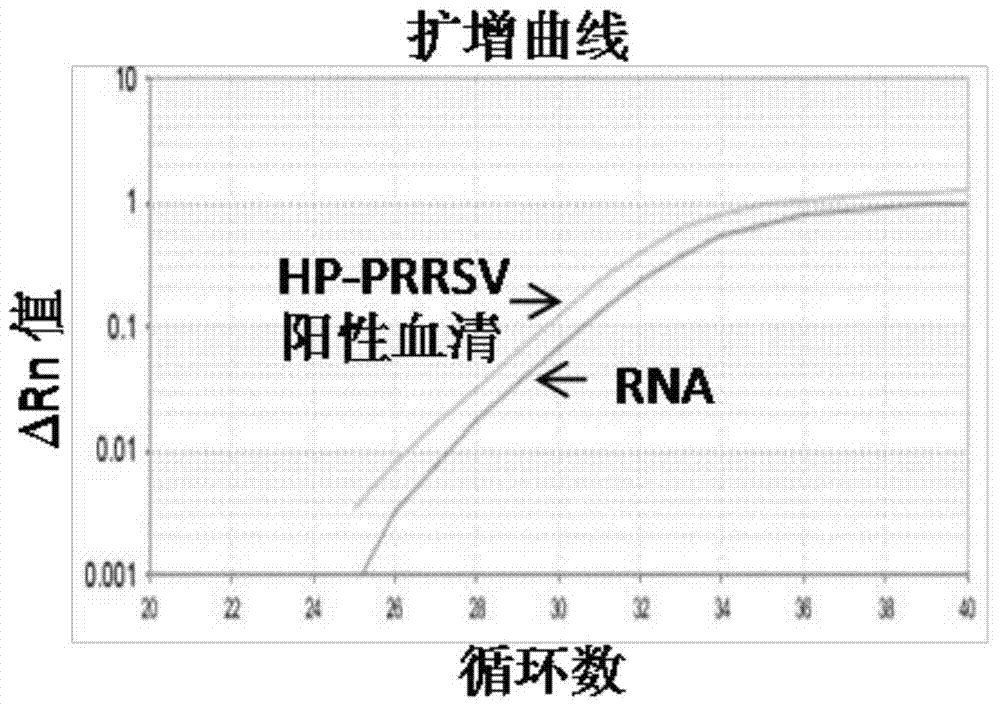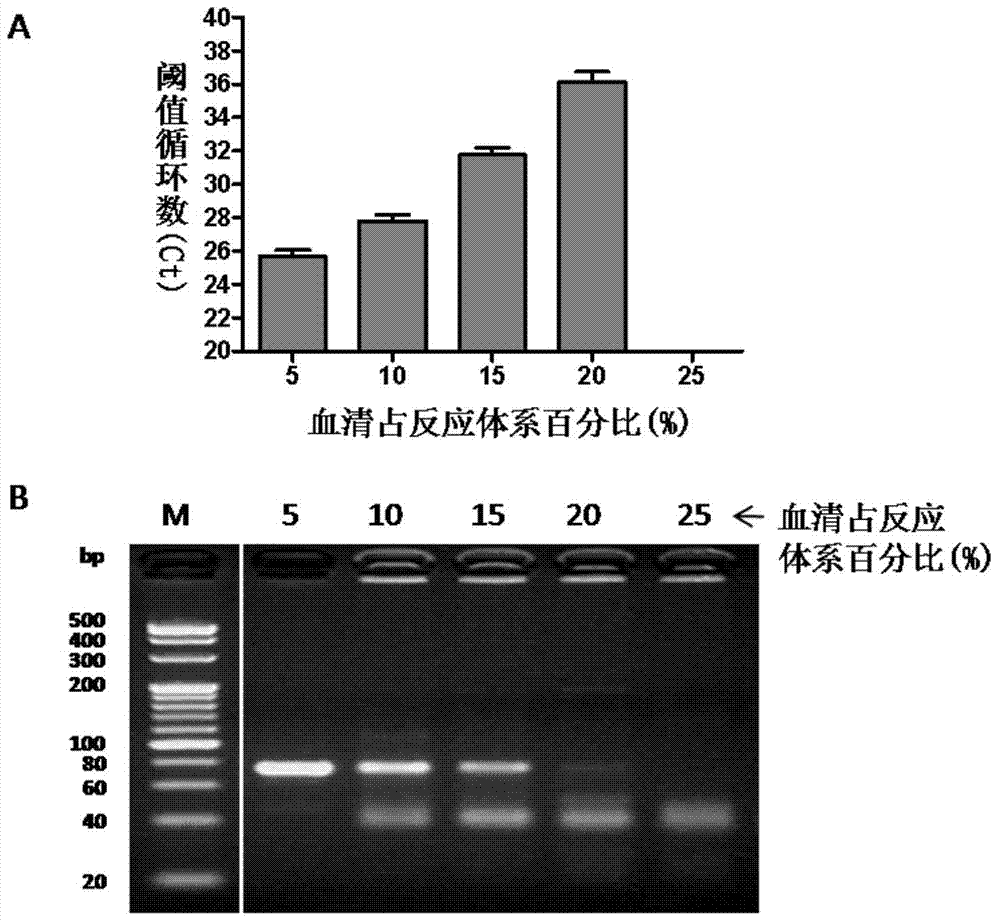Detection primers, probe and detection method of highly pathogenic porcine reproductive and respiratory syndrome virus
A porcine blue ear disease virus, highly pathogenic technology, applied in the biological field, can solve the problems of increased detection workload, time and cost, RNA degradation and cross-contamination, and difficulty in realizing high-throughput detection, so as to reduce operation steps and facilitate Degradation, cost-saving effect
- Summary
- Abstract
- Description
- Claims
- Application Information
AI Technical Summary
Problems solved by technology
Method used
Image
Examples
Embodiment 1
[0039] The detection method (direct amplification RT-PCR method) of embodiment 1 highly pathogenic porcine blue ear disease virus
[0040] 1. Design of specific primers and probes
[0041]The highly pathogenic PRRS virus HP-PRRSV has a discontinuous deletion of 30 amino acids in the non-structural protein 2 (NSP2) coding region, based on which specific primers and probes were designed: respectively designed at both ends of the deletion region Upstream and downstream primers; and a Taqman probe was designed to span the flanking sequences at both ends of the amino acid deletion region.
[0042] The sequence of the upstream primer (dHP-PRRSV-F) is:
[0043] 5'-GGTCGGCACCAGTTCCTG-3' (SEQ ID No: 1),
[0044] The sequence of the downstream primer (dHP-PRRSV-R) is:
[0045] 5'-AAATCCAGAGGCTCATCCTGG-3' (SEQ ID No: 2),
[0046] The sequence of the Taqman probe (dHP-PRRSV-pro) is:
[0047] 5'-FAM-CGCGTAGAACTGTGACAACAACGCTGACG-BHQ1-3' (SEQ ID No: 3).
[0048] 2. Exploration of dire...
PUM
| Property | Measurement | Unit |
|---|---|---|
| Molecular weight | aaaaa | aaaaa |
Abstract
Description
Claims
Application Information
 Login to View More
Login to View More - R&D
- Intellectual Property
- Life Sciences
- Materials
- Tech Scout
- Unparalleled Data Quality
- Higher Quality Content
- 60% Fewer Hallucinations
Browse by: Latest US Patents, China's latest patents, Technical Efficacy Thesaurus, Application Domain, Technology Topic, Popular Technical Reports.
© 2025 PatSnap. All rights reserved.Legal|Privacy policy|Modern Slavery Act Transparency Statement|Sitemap|About US| Contact US: help@patsnap.com



